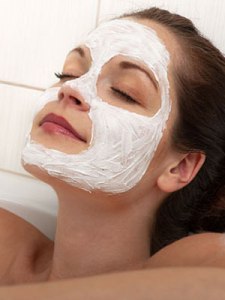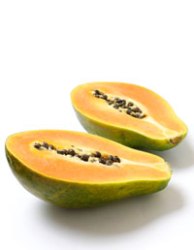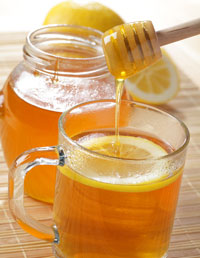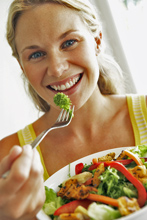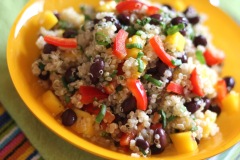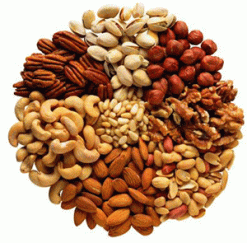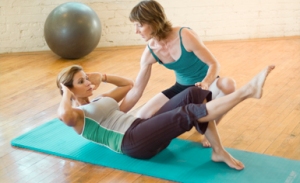You’ll be shocked to find this veggie isn’t a veggie at all. It’s a super-fruit, and no it’s not a tomato. Read on to find out more about its benefits and get some great recipes.
Chances are you’ve eaten this mysterious fruit before. You’ve probably thrown it in your salad, spread it on your toast or even rolled it into your burrito. Yep, you heard right – fruit in your burrito!
The super berry I’m speaking about is the avocado.
Avocados are a misunderstood fruit. For one thing, they are often mistaken as a vegetable, but what’s even more perplexing, is that many people believe they should be avoided due to their high fat content.
If you’re one of those people, then you’re missing out! Avocados pack a whole lot of nutrients and can even play a role in weight management and reducing your risk of several diseases. Who cares if they have a high fat content! Fat is good for you when it’s the type that an avocado contains.

Fat is back!
According to Nutrition Data online, one avocado (approximately 201g) contains 322 calories and 29 grams of fat – that means about 81% of its calories are derived from fat. But we’re not talking about the saturated kind here; we are talking about the good kind – monounsaturated fatty acids (MUFAs).
MUFAs are known to lower cholesterol. But what’s even better is that while lowering the cholesterol you don’t want (Low-density lipoproteins – LDL), MUFAs simultaneously increase the cholesterol you do want (High-density lipoproteins – HDL).
An article on MayoClinic.com put it well, “Just lowering your LDL cholesterol might not be enough for people at high risk of heart disease.” (“Mayoclinic.com”). This is what makes the avocado so great! Its high levels of MUFAs raise and lower good and bad cholesterol respectively, making it an even more effective fruit to help reduce your risk of heart disease.
On top of that, the MUFAs in an avocado help to burn fat and maintain lean tissue. According to Laura Bramble of eHow.com, a study published in the Journal of Nutrition in 2004 established that, “Not only do MUFAs burn fat, but they were shown to preserve lean body mass during weight loss…” (Bramble). She continues to write that based on the study conducted,” by preserving lean tissue, MUFAs decrease your body fat percentage and the health risks associated with a high percentage.” (Bramble).
A nine out of nine
So now that you see why this high fat berry isn’t anything to be scared of, you’re probably wondering what makes it “the ultimate fruit for healthy living”.
Aside from its heart healthy properties, did you know that an avocado is considered a complete protein source? That means that is contains all nine of the essential amino acids: Histidine, Isoleucine, Leucine, Lysine, Methionine, Phenylalanine, Theronine, Trypotophan and Valine.
For us bodybuilders and fitness fans, that is an exciting quality in a fruit! This means that eating avocado’s will aid in ensuring that our bodies have what they need to recover and build new muscle. Granted, lots of fruits and veggies contain amino acids, but what makes the avocado unique is that it doesn’t leave any out. This is extremely important when repairing muscle tissue because, “If even one essential amino acid is missing, the body can not continue proper protein synthesis. This can lead to lack of vital proteins in the body, which can cause problems ranging from indigestion to depression to stunted growth.” (Bergh).
Let’s get moving
Nutrition Data online also states that one avocado contains 13g of Fiber – that’s more fiber than 1 ½ cups of oatmeal! But what’s really cool is that the avocado contains both soluble and insoluble fiber.
According to Medline Plus, “Soluble fiber attracts water and turns to gel during digestion. This slows digestion.” And, “Soluble fiber may help lower cholesterol, which can help prevent heart disease.” (“Medline Plus”) – Yet another component of an avocado that keeps your heart healthy!
Insoluble fiber on the other hand, “adds bulk to the stool and appears to help food pass more quickly through the stomach and intestines.” (“Medline Plus”).
So again, you’re getting the best of both worlds all in one little fruit! Improved heart health and better digestion – not to mention the fact that Fiber keeps you feeling fuller, longer! And when you’re dieting or watching your weight, that factor alone is worth its weight in gold!
Protect yourself
It’s hard to believe that there is even anything left to say positively about the avocado – it seems like we’ve covered everything already! But, there is one more thing.
The avocado has another unique property; it contains three powerful antioxidants that help protect our bodies against free radicals – vitamins C, E and beta-carotene (vitamin A precursor).
Accordingly to ScienceDaily.com, these antioxidants, “… play a role in helping to prevent diseases such as cancer, cardiovascular disease, Alzheimer’s disease and macular degeneration.” (“ScienceDaily”). And this doesn’t even consider the countless anti-aging benefits!
Get in my belly!
All in all, I think it’s pretty safe to say that the avocado truly is ‘super’ – but now let’s talk about how to incorporate it into your diet.
If you’ve never tried it before, the avocado has a fresh but subtle flavor, accompanied by a buttery like consistency – which makes it a perfect addition to a variety of dishes.
Try these quick and yummy recipes below, and don’t be afraid to experiment with the avocado yourself. It’s not just an awesome fruit, nutritionally speaking, but it’s a cooking lover’s dream ingredient since the Avocado can be added to sweet, salty, spicy or tangy dishes – it’s incredibly versatile!
Fresh and Fruity Salad
- 1 pouch of tuna
- ¼ of an avocado chopped into chunks
- ½ of an apple chopped into chunks
- 2 stalks of celery chopped into chunks
- ½ tbsp light mayo
- Splash of lime juice
Combine all the ingredients above in dish. Serves 1.
‘Not Your Average Berry’ Protein Shake
- 35g banana
- 18g avocado
- 200g Egg Whites (pasteurized)
- 5g of Natural Peanut Butter
- 1 package of sweetener
Combine all the ingredients above in a blender – fits a magic bullet perfectly! Serves 1.
Sources:
1. Tsang , Gloria. “Good Fats and Bad Fats.” healthcastle.com (2004): 1-1. Web. 7 Feb 2011. <http://www.healthcastle.com/goodfats-badfats.shtml>.
2. Bramble, Laura. “Monounsaturated Fats & Weight Loss.” eHow n. pag. Web. 7 Feb 2011. <http://www.ehow.com/about_5438439_monounsaturated-fats-weight-loss.html>.
3. Bergh, Bob. “The Avocado and Human Nutrition, Some Human Health Aspects of the Avocado .” Regenerative Nutrition n. pag. Web. 7 Feb 2011. <http://www.regenerativenutrition.com/content.asp?id=443>.
4. “Soluble vs. insoluble fiber.” Medline Plus n. pag. Web. 7 Feb 2011. <http://www.nlm.nih.gov/medlineplus/ency/article/002136.htm>.
5. Farr, Gary. “Types of Amino Acids: Essential Amino Acids (EAAs); Semiessential Amino Acids.” becomehealthynow.com (2002): n. pag. Web. 7 Feb 2011. <http://www.becomehealthynow.com/article/proteins/335/>.
6. “Avocados and Antioxidants.” avocado.org.au (2009): n. pag. Web. 8 Feb 2011. <http://www.avocado.org.au/resources/articles/articles.aspx?articleID=13>.
7. “Antioxidants: Preventing Diseases, Naturally.” ScienceDaily (2007): n. pag. Web. 8 Feb 2011. <http://www.sciencedaily.com/releases/2007/09/070908001613.htm>.
8. http://www.mayoclinic.com/health/hdl-cholesterol/CL00030
Written by Kristen Adamson
Originally published on Muscleandstrength.com













